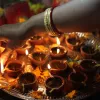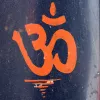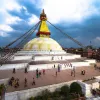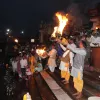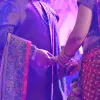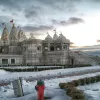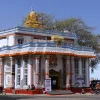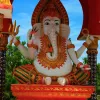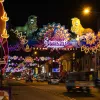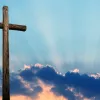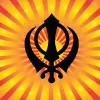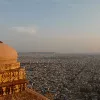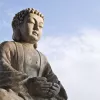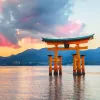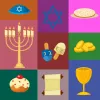TheSchoolRun.com closure date
As we informed you a few months ago, TheSchoolRun has had to make the difficult decision to close due to financial pressures and the company has now ceased trading. We had hoped to keep our content available through a partnership with another educational provider, but this provider has since withdrawn from the agreement.
As a result, we now have to permanently close TheSchoolRun.com. However, to give subscribers time to download any content they’d like to keep, we will keep the website open until 31st July 2025. After this date, the site will be taken down and there will be no further access to any resources. We strongly encourage you to download and save any resources you think you may want to use in the future.
In particular, we suggest downloading:
- Learning packs
- All the worksheets from the 11+ programme, if you are following this with your child
- Complete Learning Journey programmes (the packs below include all 40 worksheets for each programme)
You should already have received 16 primary school eBooks (worth £108.84) to download and keep. If you haven’t received these, please contact us at [email protected] before 31st July 2025, and we will send them to you.
We are very sorry that there is no way to continue offering access to resources and sincerely apologise for the inconvenience caused.
Hinduism
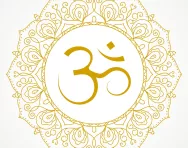
Hinduism is one of the oldest religions in the world. It began about 5000 years ago, linked to the people who lived near to the Indus River in about 2500 BC.
Hinduism has no single founder or prophet. The Hindu faith draws on a number of sacred texts and there is no standard set of beliefs, so it is a religion which is followed in different ways by different groups of people.
Hinduism has grown to be the world’s third largest religion, after Christianity and Islam.
Top 10 facts
- Although the majority of Hindus live in India where the religion began, there are large Hindu communities all over the world.
- Today more than a billion people in the world are Hindus.
- All Hindus believe that life, death and rebirth are a continuous process that we are all part of.
- Many gods are worshipped in Hinduism. Each Hindu god is said to be a different part of the supreme God ‘Brahman’.
- Hindus believe that God can be seen in a person or an animal. They believe that God is in everybody.
- As well as visiting temples, Hindus worship God in their own homes and most houses have either a room or corner in which there is a family shrine.
- Hindu temples look very different depending on where they are in the world, but they always have an orange flag outside.
- Hindus believe that certain rivers are sacred and have the power to wash away sins (actions that are wrong in the eyes of God). The Ganges River in Northern India is especially sacred to Hindus.
- Hindus believe that all living things have souls, which is why very committed Hindus are vegetarians.
- Cows are considered to be sacred animals among Hindus because they produce milk for people. In India cows are allowed to wander freely, so they can sometimes cause traffic jams if they stroll on roads!
Hindu Timeline
- 1300BCThe oldest hymns in Hinduism, the Rig Vega, begin to be composed.
- 800BCThe sacred text of the Mahabharata begins to be composed.
- 100BCThe Ramayana is written in Sanskrit.
- 600Hinduism grows and flourishes and simple prayers and songs are written in the languages that Hindu people speak: Hindi, Bengali and Tamil.
- 950-1050A "city of temples" is built in India at Khajuraho; 25 of the original 80 temples are still standing today.


Boost Your Child's Learning Today!
- Let us create a tailored plan for your child
- English & maths resources added each week to your plan
- Watch your child leap ahead in their learning & confidence
Did you know?
Hindus believe in one supreme God who created everything and contains every characteristic in the universe. The supreme God is made up of many different gods who can take the form of humans or animals. Each has different powers and Hindus choose specific gods to worship in specific situations and areas of the world.
Hindus call their religion sanatana dharma, which means eternal teaching.
The building where Hindus worship is called a mandir. There are mandirs all over the world and they can be large buildings or small shrines in someone’s home.
Most mandirs have a statue of the god Ganesh, who has an elephant’s head and a man’s body. He is a good luck symbol for Hindus. When Hindus begin their prayers or start something new, they pray to Ganesh.
For Hindus, time does not run in a straight line but in circles. The universe is created, exists and then is destroyed, and the same cycle applies to all living things.
Om or Aum is a symbol and a sound that is associated with Hinduism.
Hinduism has several Holy Books. The oldest are called the Vedas and are written in Sanskrit. The word ‘Veda’ means knowledge.
Cows are sacred to Hindus, who don't eat beef. Cows are the holy animals of transport for Shiva, one of the Hindu gods, and are also respected because they produce enough milk for everyone, not just their own offspring.
Nature is also important to Hindus as they believe things around us are forms of God too. The River Ganges in India is said to be Holy and people go there to bathe and wash away their sins.
Hindu gallery:
- Diwali lamps
- The Om or Aum symbol for Hinduism
- A mandir
- Hindus on the banks of the Ganges
- A Hindu wedding
- The mandir in Toronto, Canada
- A Hindu mandir in India
- Children celebrating Holi
- A Hindu man
- The elephant God Ganesh
- Diwali lights
- A flower rangoli
Gallery
About
Although the Hindu religion is one of the oldest religions in the world, it is actually a mixture of different faiths. It combines the beliefs of the people who first settled in India with ideas of people who came to India in the last 3,000 years.
In Hinduism one supreme God called Brahman (“the Absolute”) can be found in everything and everywhere and shows himself in many different ways. Brahman shows himself through other lesser gods and it is often these that most ordinary Hindus worship.
The three most important Hindu gods are Brahma (the Creator), Shiva (the Destroyer) and Vishnu (the Protector); together they make up a trinity (Trimurti).
Other Hindu deities (gods) include:
- Krishna (worshipped as a god but also considered to be an avatar of Vishnu, one of the forms that the god took when visiting Earth)
- Ganesh (the Remover of Obstacles)
- Hanuman (the Monkey-God)
- Lakshmi (the goddess of wealth and good fortune).
Vishnu is the God who preserves life and stands to fight against evil, Shiva stands for the forces of Nature.
As well as the Vedas, collections of Hindu hymns and prayers, there are lots of stories about Hindu gods. A popular one is a long poem called the Ramayana, the story of Lord Rama, an Indian prince, and his wife Sita. Another sacred text is the Mahabharata, an epic poem which has over 100,00 verses! Today most Hindus read these texts in translation, but they were first written in an ancient language called Sanskrit.
The fact that Hindus believe that God is everywhere means they can worship both at home or in a temple (mandir). At home many families have a shrine decorated with statues or pictures called murtis. The shrine might be decorated with flowers, and incense might be burned to remind people that God is everywhere.
Hindu temples, mandirs, can look very different but they are usually square or rectangular and contain halls built one inside the other. The outer rooms might be very beautifully decorated, but the inner room is plain and lit by oil lamps. Some mandirs even have a school inside where children can learn all about the Hindu faith, hear Hindu stories and talk about Hindu festivals.
Hindus bow when they pray in the mandir. You may have seen pictures of them praying with their foreheads touching the ground – this is to show how much they love and respect God. When Hindus visit a mandir, they always leave their shoes outside.
In each mandir there are murtis, statues and pictures which show Hindus different ways to think about God. Hindus show their love for God by bringing a gift to offer to their favourite picture or statue; it might be food (known as prasad), incense or water. Religious songs and music are an important part of Hindu worship, as is dancing. Hindus often dance as another way of worshipping God, telling a story with their hands and body. They also come together to sing in a special way; this is called a chant.
Hindus believe that people can be born again after death; this is known as reincarnation. In each life the person is rewarded or punished for what they have done in the previous life (karma). Hindus believe if they lead a perfect life, they will be freed from birth and death to join God. A Hindu’s ultimate goal is to be become one with Brahman (moksha).
Hindus enjoy many festivals as part of their religion.
The Holi festival marks the beginning of spring and the harvest (in India the harvest takes place around March). Everyone sings and dances together as well as squirting each other with coloured water or powder! At Holi people celebrate by eating special foods.
Diwali, or the Festival of Lights, is held in the Hindu month of Ashwin in September or October and marks the Hindu new year. At Diwali Hindus celebrate light driving away darkness. People prepare for Diwali by cleaning their house before they decorate it. In every house and temple, oil lamps are lit as well as floated down rivers to welcome the goddess of wealth, Lakshmi. Fireworks are also let off to ward off any evil spirits.
Hindu people go on pilgrimages, religious journeys, to vist places that are sacred to the Hindu faith. The river Ganges in India is said to flow from the feet of the god Vishnu and is sacred to Hindus, who believe that bathing in the Ganges washes away sins. Water is very important in the Hindu faith because it is said to flow between Earth and the home of the gods.
Traditional Hindu clothes include a robe (dhoti) and shawl (chaddar) for men. Hindu women wear a piece of clothing called a sari. It is a long straight piece of cloth – one end of the sari is placed around the waist, it is pleated at the front and tucked in and the other end is brought over the shoulder.
Hindus celebrate different stages in their life with ceremonies (samskaras), and the most important are marriage (vivaha) and cremation (antyeshti).
Hindu wedding celebrations last for many days. The bride and groom wear the traditional celebration colours of red and gold.
After death, Hindus are cremated (their bodies are burned in a holy ritual on a funeral pyre). On the third day after the cremation the person's family collects the ashes from the funeral ground and scatters them in a nearby river.
Related Videos
Just for fun...
Watch an animation of the Diwali story and then make your own Diwali lantern
Do some Diwali colouring or try some Diwali crafts, including some beautiful origami lotus flowers, Diwali cards and glitter-decorated tealights
At Diwali Hindus draw rangoli patterns (colourful designs, usually created on the floor near the entrance to a house) to encourage the goddess of wealth, Lakshmi, to enter their homes. Colour in your own rangoli patterns
Find out how to make some traditional Diwali sweets and snacks and cook some traditional dishes for Diwali
Read the Rama and Sita story on a digital book
Cook some delicious Besan Ladoo sweets for Holi
Make some Holi crafts and print Holi colouring pages
Download a free Holi activity pack packed with craft ideas, stories, recipes, mindfulness activities, colouring and word games from Hindu children's book publisher Jai Jais
Watch a video in which a Hindu explains her belief system to aliens
Children's books about Hinduism
Find out more
See a chart of Hindu gods and goddesses
Explore paintings that tell stories of Krishna
Diwali celebrations around the world, in photographs
Videos about Hindu beliefs about God and about life after death are available on the BBC Bitesize website
In a video about Hinduism for KS1 children, Charlie and her soft toy Blue visit a mandir to hear all about Hindu worship
Listen to BBC School Radio resources about Diwali
See what some of the Hindu prayers mean
Find out more about the festival of Diwali and the ceremony of Ankot
The river Ganges in India is sacred to Hindus
Hear traditional stories from Hinduism (Rama and Sita and Nachiketa and Yama) on the British Library's website
See a picture of a Sanskrit religious text
Watch an animated story about Krishna and King Kans and a cartoon about the birth of Krishna
The Bhaktivedanta Festival is the largest Hindu festival outside of India
Watch a video to understand more about Hindu worship, puja, and the use of Aum in prayer
Listen to the traditional Hindu tale of Lakshmi and the Clever Washerwoman on BBC Schools Radio, then complete the colouring and sequencing activities
Glossary of Hindu terms
Arti - the daily worship ceremony at the mandir starts with the blowing of a conch shell and uses a ghee lamp.
Brahman - the supreme God to Hindus, “the Absolute”.
Diwali - the Festival of light, held in autumn, which marks the Hindu New Year.
Ganesh - God seen as a man with an elephant’s head.
Karma - the idea that all actions have consequences which affect how people will be reborn in their next life
Mandir - the sacret building where Hindus worship.
Moksha - a Hindu’s ultimate goal, to become one with God.
Murtis - statutes or pictures depicting Hindu Gods.
Pandit - a Hindu priest.
Prashad - food that has been offered to God and shared with everyone visiting the mandir, usually sweets, nuts or fruit.
Puja - the Hindu act of worship.
Sari - a long straight piece of cloth worn by some Hindu women.
Vedas - the earliest sacred books of the Hindus, a collection of hymns and poems.
Vishnu - God seen as a man who helps when things go wrong.
See for yourself
BAPS Shri Swaminarayan Mandir in Neasden, London was Europe’s first traditional Hindu stone temple and it is open for educational visits
Go on a digital tour of a mandir and see its most important features
See Diwali celebrations in Trafalgar Square in London
